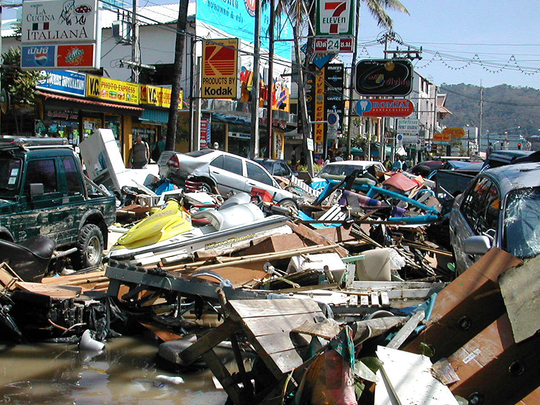
BANGKOK: Up to 80 per cent of Thailand’s tsunami warning system needs maintenance work, the deputy director-general of its disaster prevention department said on Monday, more than a decade after the region was hit by a tsunami that killed 226,000 people.
A 9.15 magnitude earthquake struck off the coast of Sumatra in Indonesia on December 26, 2004 and triggered a massive tsunami that caused large scaled destruction and loss of life throughout the Indian Ocean.
Popular tourist destination Thailand was among the worst affected, along with Indonesia, India and Sri Lanka. Many of the 5,395 people killed in Thailand were foreign tourists holidaying along the shores of its idyllic islands and beaches.
Thailand’s warning system includes warning towers, a network of detection buoys in the sea and public announcement systems.
“Around 70 to 80 per cent, or around 2,000 pieces, need to be taken care of. We set up this system since 2006 so it needs to be maintained,” Kobchai Boonyaorana, deputy director-general of the Disaster Prevention and Mitigation Department, told Reuters, referring to various equipment.
“Batteries need to be changed,” he added. “I’ve ordered that this needs to be done urgently particularly in the southern region, which is a tourist region. There might be some places where the equipment is damaged but not many places.”
Prasert Kunneang, public relations officer at the National Disaster Warning Centre in Bangkok, said the tsunami warning system is tested daily and Thailand is prepared in the event of a future tsunami.
“If there is a tsunami tomorrow, the warning system would work,” Prasert said.
Tourism accounts for 12 per cent of Thailand’s economic output, and has been a rare bright spot for Southeast Asia’s second-largest economy, whose growth has lagged peers in recent years.
Taipei back to normal
Meanwhile, one person was missing in Taiwan on Monday after the island’s second typhoon in 24 hours battered southern and central regions, taking injuries from both storms to 131, the government said.
Financial markets and businesses opened in Taipei on Monday as the capital returned to normal. But the second-largest city of Kaohsiung, on the southern coast, remained shut with the second storm, Typhoon Haitang, bringing torrential rain.
Typhoon Haitang made landfall in the south and southeast on Sunday afternoon, the government said on its website. It is the first time the island has issued alerts for two storms simultaneously in 50 years, the Central Weather Bureau said.
On Saturday Nesat, a medium-strength typhoon with wind speeds of around 119km/h, made landfall, but has since moved on to China’s southeastern Fujian province, the bureau and Xinhua said.
With its picturesque beaches, gilded palaces and temples and balmy climate, Thailand remains a firm foreign tourist favourite.











